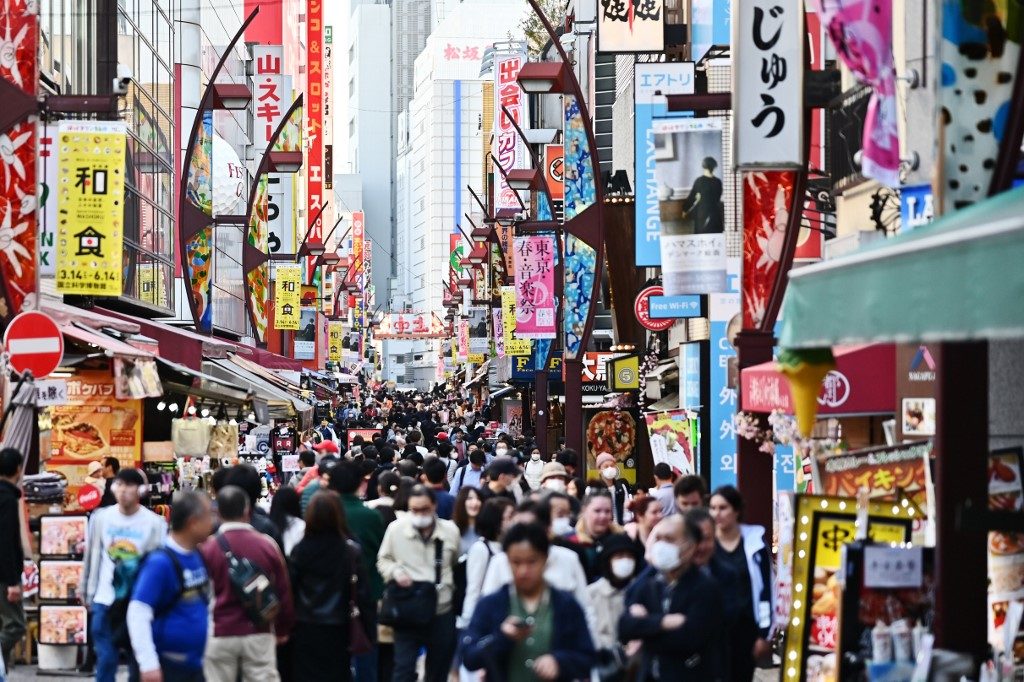SUMMARY
This is AI generated summarization, which may have errors. For context, always refer to the full article.

TOKYO, Japan – Japan’s household spending recorded its worst drop in nearly two decades in April, government data showed on Friday, June 5, as the world’s 3rd largest economy reels from the impact of the coronavirus pandemic.
Spending fell 11.1% from a year earlier, with a sales tax hike last year adding to woes, according to data released by the internal affairs ministry.
The figure was largely in line with market expectations of a 12.75% drop, and marked the 7th straight month of declines since the government hiked the sales tax in October.
“The new coronavirus is having a serious impact on the economy including spending by individuals,” chief cabinet secretary Yoshihide Suga told reporters at a regular briefing.
“We think it is necessary for us to return to regular economic activities step by step while taking counter-infection measures, as businesses are trying to survive the current situation,” added Suga, the top government spokesman.
The April drop was partly attributed to declines in spending on transport and telecommunications, as well as on leisure activities.
It is the worst decline since comparable data became available in 2001.
The latest figures come after official data last month confirmed Japan dived into its first recession since 2015, shrinking by 0.9% in January-March as it wrestles with the fallout from the coronavirus.
The drop in gross domestic product followed a 1.9% decline in the 4th quarter of 2019 as the tax hike and typhoons hit Japan hard – even before the pandemic shut down much of the economy.
Fears about the economic impact of the virus have shaken global and Japanese financial markets, and the Bank of Japan in April expanded its emergency monetary easing and cut growth forecasts for the country.
Compared with hard-hit areas in Europe, the United States, Russia, and Brazil, Japan has been spared the worst of the pandemic, with 17,064 infections and 907 deaths.
But on April 7, with cases beginning to spike and fears for the country’s health system, Prime Minister Shinzo Abe declared a state of emergency for Tokyo and 6 other regions – later expanding it to cover the entire nation.
Businesses and schools were urged to shut and people were asked to remain home, but Japan’s lockdown was far softer than in other parts of the world and there was no punishment for those flouting the rules.
People largely heeded the orders, however, with most of Tokyo’s famously packed streets falling quiet.
On May 25, Japan lifted a nationwide state of emergency, gradually reopening the economy as government officials warned caution was still necessary to prevent another wave.
The number of new infections has fallen from a peak of around 700 per day to just a few dozen nationally but officials warn there is a possibility of a second wave of infections in parts of the country, including Tokyo. – Rappler.com
Add a comment
How does this make you feel?
There are no comments yet. Add your comment to start the conversation.